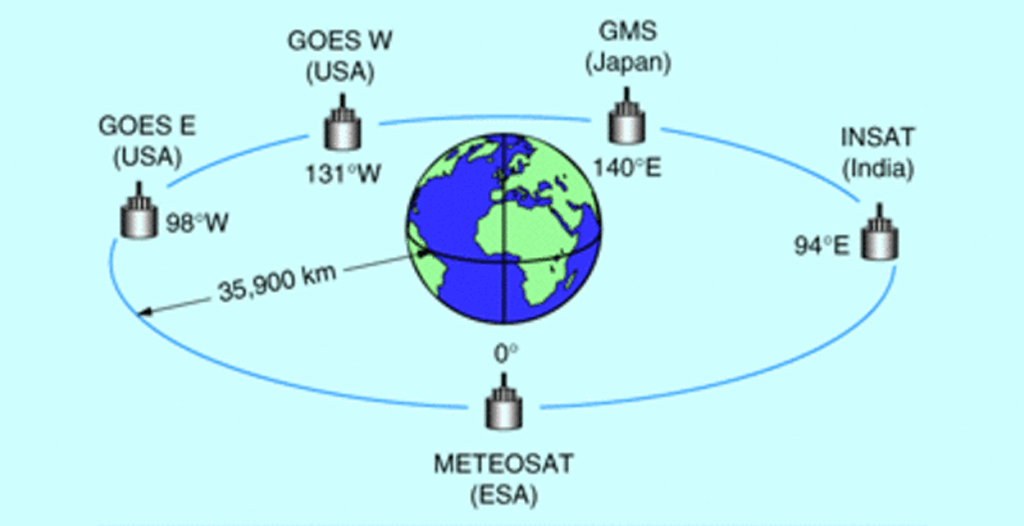
While about 55 percent of all operational satellites are in LEO, another 35 percent are in GEO, making it the second most popular orbital regime.


Strictly speaking, a geostationary satellite would be in an orbit of 0 degrees inclination, zero. An object in such an orbit has an orbital period equal to the Earth's rotational period, one sidereal day, and so to ground observers it appears motionless, in a fixed position in the sky. Geostationary Earth Orbit (GEO) Geostationary Earth Orbit (GEO) satellites, which have been around for over 50 years, were first launched for communications in NASA’s Syncom III experiment in 1964, providing worldwide television coverage of the Tokyo summer Olympics. Clarke who first suggested the usefulness of such an orbit). A geosynchronous orbit is an Earth-centered orbit with an orbital period that matches Earths rotation on its axis, 23 hours, 56 minutes, and 4 seconds. This application predicts the orbital position of geostationary satellites from Public Two-Line Element Orbital Information (TLE). Unlike all other classes of orbits, however, where there can be a family of orbits, there is only one geostationary orbit. Located at 22,236 miles (35,786 kilometers) above Earth's equator, this position is a valuable spot for monitoring weather, communications and surveillance.Ī geostationary orbit, also referred to as a geosynchronous equatorial orbit (GEO), is a circular geosynchronous orbit 35,786 kilometres (22,236 miles) above Earth's equator and following the direction of Earth's rotation. So just what is a geostationary orbit In general terms, it is a special orbit for which any satellite in that orbit will appear to hover stationary over a point on the earth's surface. The synchronization of rotation and orbital period means that, for an observer on Earth's surface, an object in geosynchronous orbit returns to exactly the same position in the sky after a period of one sidereal day. Geostationary orbits, therefore, are also known as high orbits. A geosynchronous orbit (sometimes abbreviated GSO) is an Earth-centered orbit with an orbital period that matches Earth's rotation on its axis, 23 hours, 56 minutes, and 4 seconds (one sidereal day). A satellite in geostationary orbit is very high up, at 35, 850 km above the Earth.


 0 kommentar(er)
0 kommentar(er)
